Nancy Krause Knows Her Stuff
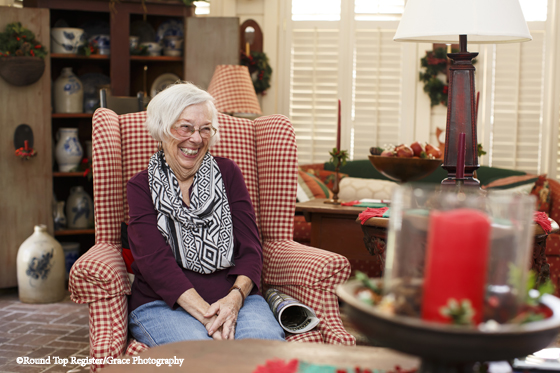
2026 WINTER ANTIQUES & DESIGN SHOW, JANUARY 22-25 | 2026 SPRING ANTIQUES & DESIGN SHOW, MARCH 14 – 28

Nancy Krause, owner of Nancy’s Antiques in Brenham, knows her stuff.
She can spot the nuanced distinctions that make one piece of Texas primitive furniture run-of-the-mill and another museum quality. She can fit 43 pieces of furniture in a Penske truck and drive it across the country from the famed antiques fair in Brimfield, Mass., to her home base. She can tell you the stories behind all of the one-of-kind pieces that currently fill her home and her business, which encompasses three buildings, as well as many from the thousands of pieces she’s sold in her career spanning six decades.
“The story behind the piece is the beauty of buying this stuff,” Krause said. “Every time you look at something, there’s a story behind it with people starring in the stories. Antiques hold memories.”
She keeps the ever-changing inventory of handmade Texas and early American furniture and all of her multi-faceted memories stored in her head. It’s a wonder there’s room for it all. However, a brief conversation proves Krause’s information recall is far superior to any technology developed by Steve Jobs or Bill Gates.
“Stories make things easier to remember,” Krause said. “There’s usually an incident, a situation or people involved with every piece or every transaction that makes it stand out from the rest.”
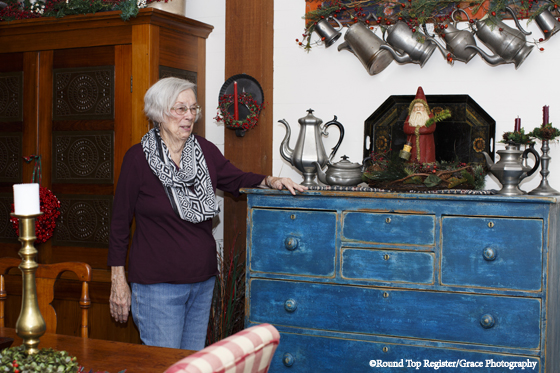
Ownership details of Big Blue, an early Canadian cabinet painted an eye-catching shade of blue that has come in and out her life on at least three occasions, reside alongside first-hand memories of doing business with Ima Hogg, Faith Bybee and Hazel Ledbetter, the luminaries who pioneered efforts to preserve Round Top’s unique culture. Scenes of the first Round Top Antiques Show are interspersed throughout because she was one of the 24 original vendors who convened at the Rifle Hall in the fall of 1968 at the invitation of legendary show promoter Emma Lee Turney.
“I’ve been blessed to do this for so many years . . . meeting so many people . . . seeing so many beautiful things . . . having so much fun,” Krause said.
A Utility Room Shelf
Krause’s first career was teaching school. She came to Washington County as the new bride of Milton Krause, a fellow educator and Brenham native. She taught first and third grades until Milton’s promotion to principal made him her boss. (He eventually became assistant superintendent, and today Brenham’s Krause Elementary bears his name.) She retired from teaching in public schools but began teaching English as a second language to adults through community education—and embarked on a new career in antiques.
Nancy’s Antiques started as a sideline.
“I hung a shelf on my laundry room wall and said, ‘I’m in business,’” Krause recalled. “It was October 1965—you can call the State Comptroller’s Office and check. I still remember my first tax i.d. number because, back then, it was your Social Security number with a digit in the front and a digit in the back.”
[pullquote width=”300″ float=”left”]“I’ve been blessed to do this for so many years . . . meeting so many people . . . seeing so many beautiful things . . . having so much fun.”[/pullquote]
Acting on a tip from a fellow teacher whose mother was an antiques dealer years earlier, she discovered an elderly couple who were pickers. Every day the duo would head out to the country to search for antiques and then return home around 4 p.m. to sell the day’s treasures to whomever showed up to buy. As word spread, the crowd grew to four or five regulars.
The couple had neither truck nor trailer; they drove a four-door Chevrolet. If they needed more room, they’d remove the car’s backseat.
“People would meet them on the driveway as they unloaded their car,” Krause said. “If they had a big piece or a big load, the old couple would get out, go sit in their chairs—and we buyers would unload the car.”
The buyers quickly sprang into action asking, “How much for this?” and saying, “I’ll pay this much for that.” As a point of reference, the buyers were purchasing antique crocks and jugs straight out of the Chevy for about $.50 apiece.
“A lot of funny stuff happened out there,” Krause said. “That driveway is where I got hooked.”
She was an antiques novice when she started.
“I cut my teeth on Texas handmade furniture because that is what was available,” Krause said. “Mistakes are expensive, so you ask questions, read books, pay attention and learn quickly—or you don’t stay in business.”
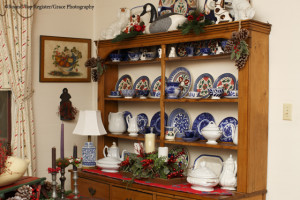
Her business quickly outgrew the shelf in the laundry room. The family moved to a house on Chauncy Street and soon acquired adjoining property that housed an old dairy barn. The barn had its own story.
“The Schleider family, who had the largest furniture store in Brenham, lived here, and the dairy barn originally belonged to them,” Krause said. “During the Depression, Mr. Schleider put his children through college by selling milk and butter. According to my husband, who grew up around the corner from here, Mr. Schleider would take the cows down to what is now Jackson Park every morning and stake them out so they could graze. After he closed the store in the evenings, he’d bring the cows home to milk them.”
Krause decided to honor the barn’s history by restoring it and repurposing it as her first store.
“Word got out that this crazy lady would buy this old junk, and people would call me when someone in their family died or moved,” Krause said. “I guess I treated everyone fairly because they would tell other family members and then they would call me, too.”
Milton bought her a GMC pickup truck so she could haul her finds.
“Somebody would call,” Krause recalled. “I’d throw our three kids in the truck, and we’d light out.”
Being the child of a treasure hunter had its ups and downs. For instance, Krause’s oldest daughter is a strong, take-charge person, but she can’t stand birds. One day they were reliving memories of their country expeditions, and the daughter’s demeanor changed noticeably.
Krause asked, “What’s the matter?”
Her daughter replied, “You’d take us to all those old farms, and I’d see all those chickens—and their feet. I can’t stand chickens’ feet.”
Krause laughs at the revelation. “Who knew I traumatized her with chickens’ feet?”
Despite the “trauma,” Krause’s passion for the furniture and the people kept her going. In hindsight, demographers in the 1960s would have likely deemed the rural region as economically deprived because local salaries and education levels were not high by national standards, but that didn’t faze the families who lived here.
“The people were healthy, happy and they made do with what they had,” Krause said. “It was fun because I got to know the culture of the area and came to understand how they kept things in the family from generation to generation.”
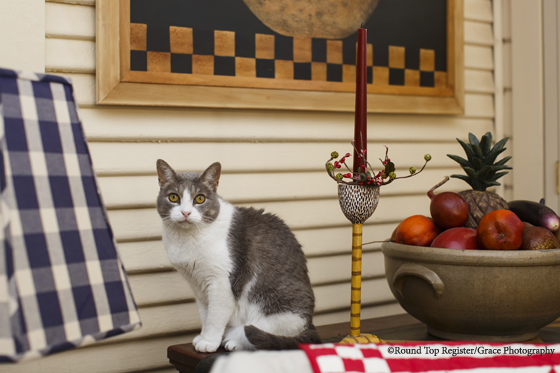
Krause once called on an elderly woman in Burton who had never had the privilege of buying a new piece of furniture. When the woman married, they moved in with her husband’s family. Her father-in-law had made all of the furniture, and when her in-laws passed away that furniture came to her. She sold Krause a fabulous cedar table because she wanted to replace it with a chrome dinette set.
Krause left the house with the table but pulled over to the side of the road before she hit the highway because she was struck by a thought.
“Is buying this sacrilegious or something?” she recalled asking herself.
Then she found her answer.
“She’s happy, and I’m happy, so we made a good deal.”
Faith Bybee eventually bought the table.
As the business grew, so did the need for space. Krause later moved in two more houses, one to serve as a residence and another as retail space. Then the family constructed their “Fisher Price barn,” a building that resembles the iconic toy, to create even more retail space.
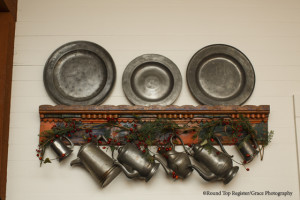
With additional retail space to fill, Krause expanded her inventory to include early American furniture.
“I have three buildings to fill, and I can’t stock three buildings with Texas furniture,” she said. “I have a mix of New England and Texas. My stuff is early, handmade and American.”
Krause hit the road to find the unique pieces that met her high standards. In 1972 she took her first road trip traveling to northern Illinois. She and two girlfriends headed north with $1,500. They came home with a station wagon and a trailer full. Ten years later she made her first trip to the show at Brimfield, Mass. For a time, she and Milton were regulars.
“After Milton retired, he went on buying trips with me,” she said. “For the record, I went on a lot of deer hunting trips with him.”
Regardless of the buying destination, Krause didn’t—and still doesn’t—buy willy-nilly. After Milton passed away in 2000, she took a friend to Brimfield.
As they were coming home in the truck, Krause asked, “What did you think?”
Her friend replied, “I’ve never seen such focused buying in all my life.”
To which Krause said, “You have to stay focused, or you can just go off and get yourself lost.”
Krause’s secret? She doesn’t buy inventory; instead, she purchases pieces to go in specific homes or in specific spots in her stores, so she knows exactly where an item is going to go or exactly how it fits into the décor.
The Original Round Top Antiques Fair
Krause is the only remaining dealer, of the original 24 (or 26 depending on who you ask), who sold at the first Round Top Antiques Fair organized by Emma Lee Turney. It was held at the Rifle Hall in fall 1968.

“In the summer of 1968, Emma Lee came to my shop and bought a piece of Texas furniture,” Krause said. “As we were loading it in her car, she said, ‘I’m going to put on a show in Round Top. Do you want to be in it?’” I agreed.
Then Krause heard nothing more. In mid-September, Krause and a friend attended the Theta Antiques Show in Houston. Krause spotted Emma Lee and asked, “Do you still want me to be in your show?”
Emma Lee replied, “Yes girl, I want you to do it. I’m counting on you to do it.”
Two weeks later, Krause set up her wares at the Rifle Hall for a two-day show. No contracts were signed. The smell of oak smoke and cooking meat wafted through the air. The women shopped, and men sat under the trees visiting and sipping cold beer.
“It was a friendly gathering,” Krause said. “It was just a place where people wanted to come spend time.”
It didn’t hurt that Ima Hogg, Faith Bybee and Hazel Ledbetter supported the show and encouraged their friends to do likewise.
“Those women had vision and influence,” Krause said. “I’m sure that it was their support, because of who they were and who they knew, that made the Round Top show the place to be.”
Ima Hogg was well-known in antiques circles as a champion of the area and Texas furniture, so when she’d come to the show word would spread quickly.
“Everybody knew when Miss Ima was in the building, and we’d all snap to,” Krause said. “She came to shop, and it was exciting. Miss Bybee was buying all those houses in the area that needed to be furnished. They were serious about quality.”
In 1969 Turney decided to make the show a semiannual event. A few years later, she added a tent at the Rifle Hall to hold more dealers.
“We were so upset because it seemed she was cutting the pie into smaller pieces,” Krause said. “What we didn’t realize was those new dealers would bring their clients with them, so we all benefited.”
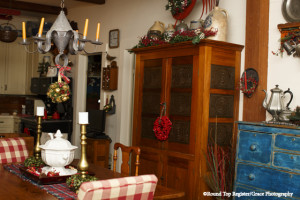
The Carmine Dance Hall was then added to the mix. The success caught the attention ofother promoters. Warrenton sprang to life bringing with it a spirit of competition. The dealers based at the Rifle Hall were discouraged from exploring other venues. It became a game for them.
“We’d put on glasses and hats and sneak down to the fields avoiding any venues that fronted Highway 237,” Krause said. “When we’d bump into one another, we’d jokingly threaten to ‘tell on’ each other. It was funny—and big fun.”
Despite its sustained growth, increasing popularity and the collective recognition that the Round Top Antiques Show was something special, no one had an inkling of what it would become.
“While we knew the Round Top Show was something special, I don’t think anyone would have or could have predicted that it would grow into the place to come for people across the country and around the world,” Krause said. “A lot of changes have occurred in the almost 50 years since we got started—and the changes don’t appear to be slowing down.”
[line]A Mortgage-paying Cupboard
Of all the pieces Krause has sold through the years, the one she wishes she could have hung on to now resides in the Dallas Museum of Fine Art. The one-of-a-kind Texas cupboard ended up in Faith Bybee’s personal collection now owned by the museum.
The story goes like this . . .
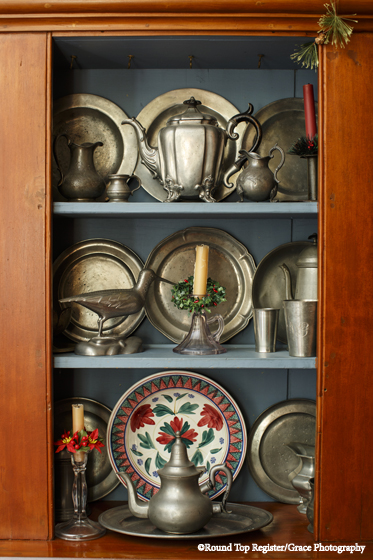
“I had the cupboard in my kitchen. Somehow Miss Ima heard about it. She called and said, ‘I’m coming to look at the cupboard.’ I panicked and called Milton to tell him that Miss Ima was coming to our house. He told me to make sure there was ‘no jelly on the floor because we don’t want her sticking to the linoleum.’
She arrived with her chauffeur, Lucius, and her personal secretary, whose name I can’t recall, in tow. By this time, Miss Ima’s eyesight had begun to fail, so she shopped by touch, feeling the construction. After her examination, she said, ‘This is the finest example of its kind that I’ve ever seen.’ Now notice, she didn’t say it was the finest antique she’d ever seen, but it was the finest of its kind, which was still a ringing endorsement. She wanted it. Then, Miss Bybee saw it. She wanted it, too.
I had two very influential, very affluent and very competitive women wanting the same piece. I said to myself, ‘This is going to be something.’
I loved that piece, so I determined I would sell it only if I could do something significant for our family. When Miss Ima died unexpectedly, I figured I’d lost my leverage, but Miss Bybee called. She still wanted the cupboard. She paid my price—and Milton and I paid off our mortgage.”
[line]
by Lorie Woodward Cantu
2026 WINTER ANTIQUES & DESIGN SHOW, JANUARY 22-25 | 2026 SPRING ANTIQUES & DESIGN SHOW, MARCH 14 – 28
